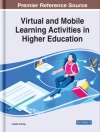Learn what effective teachers do to support students with mental retardation in and out of the inclusive classroom!
Students with mental retardation often struggle tremendously to complete the same tasks that many of their peers do without any difficulty-but with special assistance their struggles to learn can be highly successful. In Teaching Students With Mental Retardation, special and general educators will find highly effective strategies for enhancing the academic and social skills of students with mental retardation in their classrooms.
Offering a pretest, posttest, and key vocabulary terms, this exceptional resource also discusses:
- Common causes of mental retardation such as genetic conditions, problems during pregnancy and birth, and health problems
- Diagnosing mental retardation
- Cognitive, academic, physical, behavioral, and communication characteristics of mental retardation
- Methods for improving the functional academic, social, self-care, and work skills of students with mental retardation
- Instructional approaches for students with severe disabilities
- Influential trends and issues such as prevention of mental retardation and transitioning from school to work
表中的内容
About A Practical Approach to Special Education for Every Teacher
Acknowledgements
About the Authors
Self-Assessment I
Introduction to Teaching Students With Mental Retardation
1.What is Mental Retardation?
Definition
Prevalence
2.What Causes Mental Retardation?
Genetic Conditions
Problems During Pregnancy & Birth
Health Problems
3.How is Mental Retardation Diagnosed?
Significance of Adaptive Behavior in Diagnosis
4.What Characteristics Are Associated With Mental Retardation?
Cognitive
Academic
Physical
Behavioral
Communication
5.How Should Teachers Teach Students With Mental Retardation?
Improving Functional Academic Skills
Improving School Adaptive Behavior
Improving Work Skills
Improving Leisure Skills
6.What Should Every Teacher Know About Teaching Students With Severe Disabilities?
Definition
Prevalence
Curriculum Considerations
Instructional Approaches
7.What Trends and Issues Influence How We Teach Students With Mental Retardation?
Prevention of Mental Retardation
Transitioning From School to Work
8.Mental Retardation in Perspective
Recent Advances
The Importance of Environments
Inclusion
9. What Have We Learned?
Key Points
Key Vocabulary
Self-Assessment II
Answer Key for Self-Assessments
On Your Own
Resources
Books
Journals & Articles
Organizations
References
Index
关于作者
Jim Ysseldyke, Ph.D., is Birkmaier Professor in the Department of Educational Psychology, director of the School Psychology Program, and director of the Center for Reading Research at the University of Minnesota. Widely requested as a staff developer and conference speaker, Ysseldyke brings more than 30 years of research and teaching experience to educational professionals around the globe.
As the former director of the federally funded National Center on Educational Outcomes, Ysseldyke conducted research and provided technical support that helped to boost the academic performance of students with disabilities and improve school assessment techniques nationally. Today, he continues to work to improve the education of students with disabilities.
The author of more than 300 publications on special education and school psychology, Ysseldyke is best known for his textbooks on assessment, effective instruction, issues in special education, and other cutting-edge areas of education and school psychology. With A Practical Approach to Special Education for Every Teacher, Ysseldyke seeks to equip educators with practical knowledge and methods that will help them to better engage students in exploring—and meeting—all their potentials.












